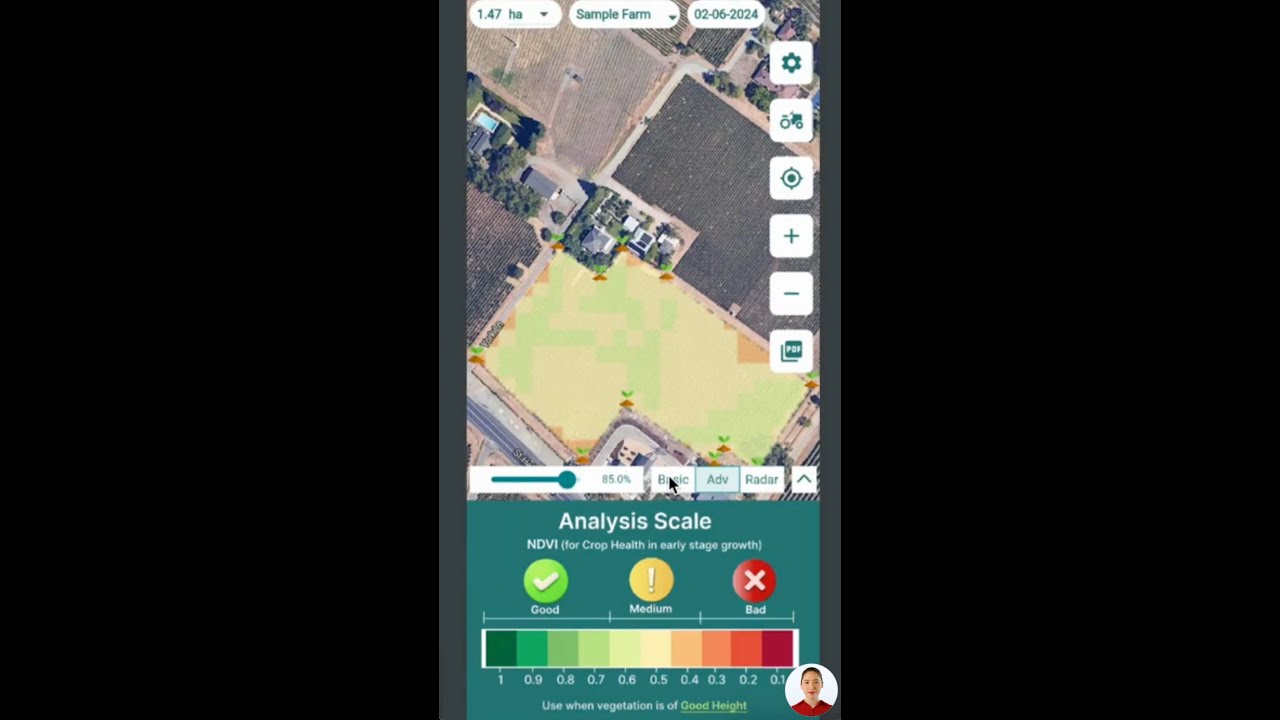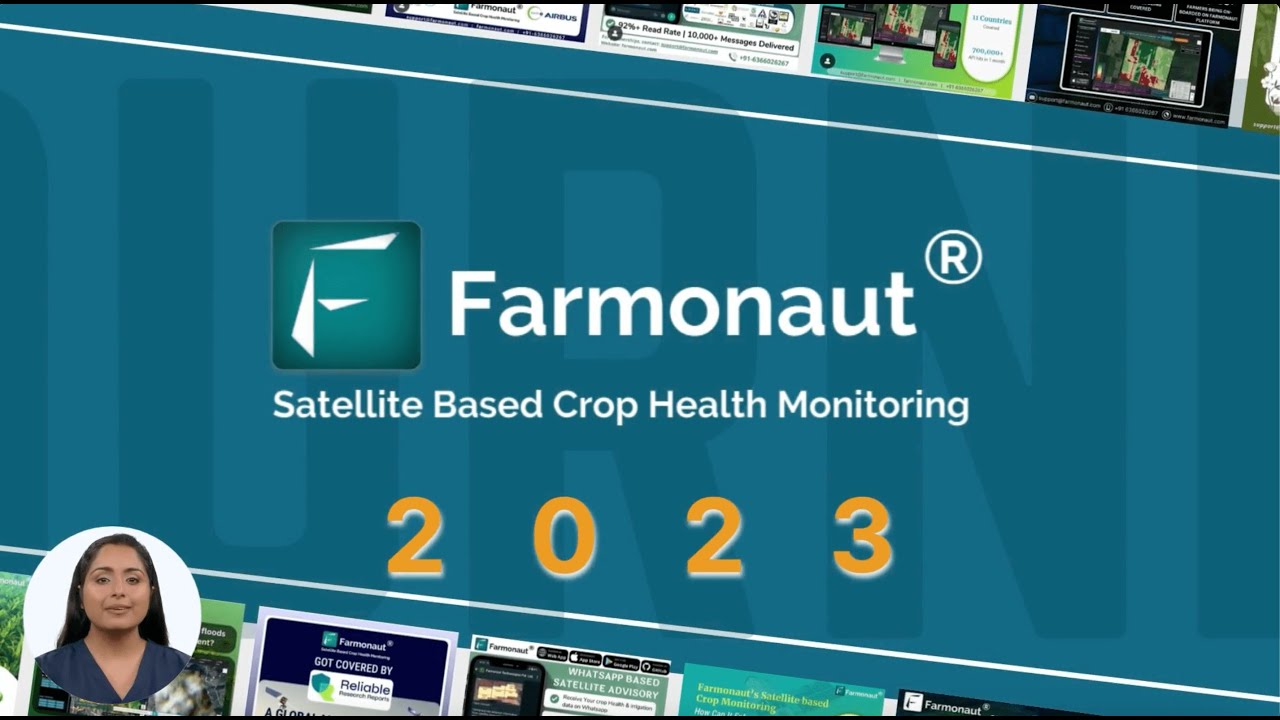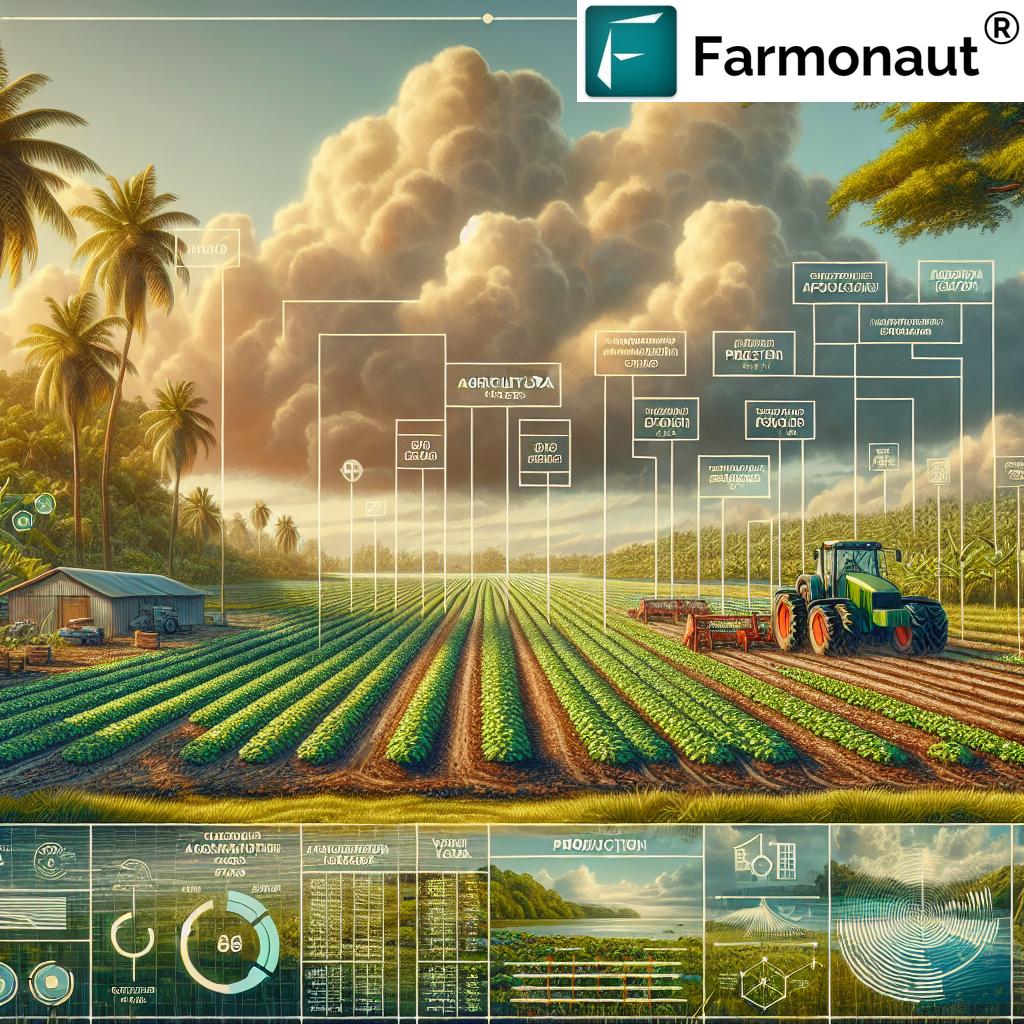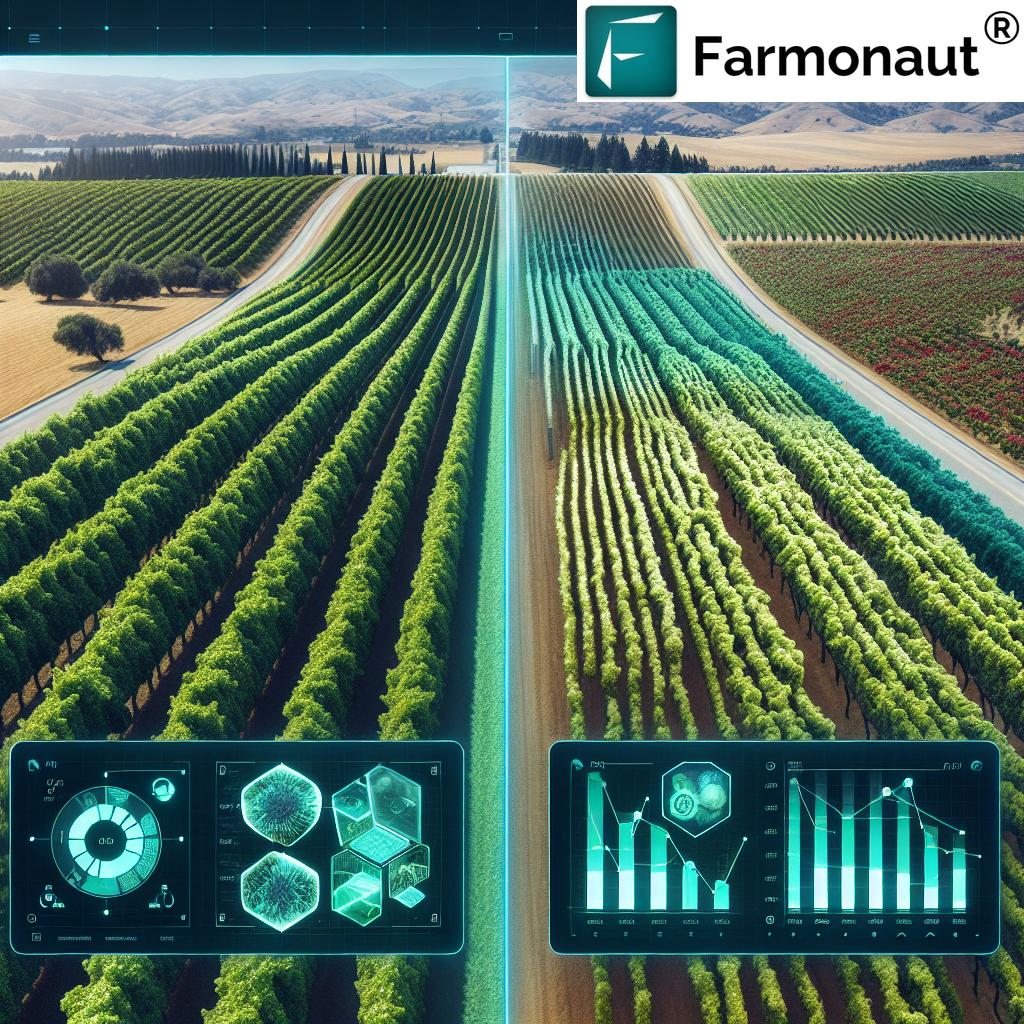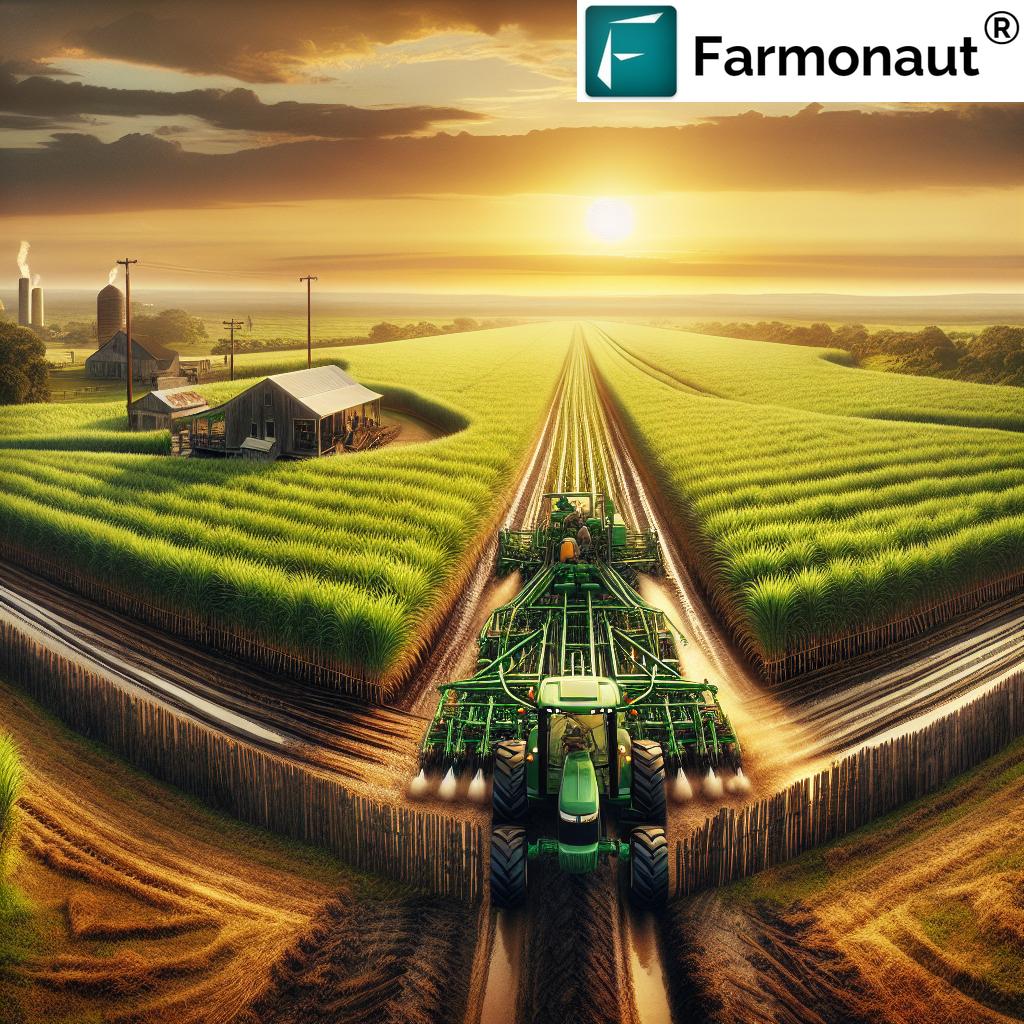Optimizing Spring Planting: Soil Temperature, Moisture, and No-Till Techniques for Missouri and Illinois Farmers
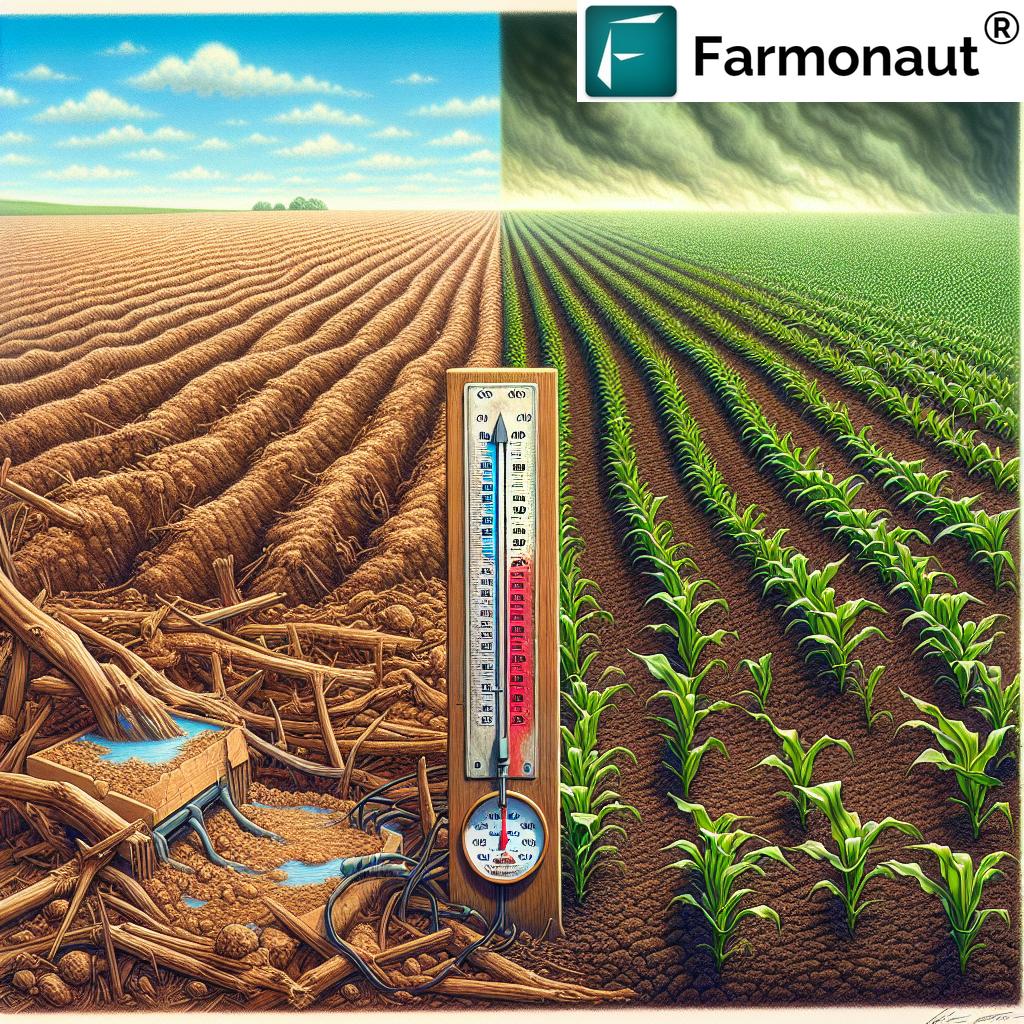
“Corn requires soil temperatures of 50°F for optimal planting, while soybeans need 55-60°F for successful germination.”
As spring arrives in Missouri and Illinois, farmers are gearing up for the crucial task of planting their crops. At Farmonaut, we understand the importance of optimizing spring planting conditions to ensure a successful growing season. In this comprehensive guide, we’ll explore the critical factors of soil temperature, moisture content, and no-till techniques that can make or break your crop’s potential.
Understanding Spring Planting Conditions
Spring planting is a delicate balance of timing, soil conditions, and weather patterns. For farmers in Kirksville, MO, Ottumwa, IA, and surrounding areas, understanding these factors is crucial for maximizing crop yields and minimizing risks.
The Importance of Soil Temperature
Soil temperature plays a vital role in seed germination and early plant growth. As Valerie Tate, an agronomy specialist for the MU Adair County Extension, explains, “We would like for the soil temperature to be around 50 degrees when we start planting corn. For planting soybeans, it should be around 55 to 60 degrees.”
These temperature thresholds are critical because:
- Seeds require specific temperatures to break dormancy and begin germination
- Soil microorganisms become more active at warmer temperatures, helping to break down organic matter and release nutrients
- Root development is significantly influenced by soil temperature
To monitor soil temperatures effectively, farmers can use various tools, including:
- Traditional soil thermometers
- Digital soil probes
- Remote sensing technologies like those offered by Farmonaut’s satellite-based crop monitoring system
Soil Moisture: The Other Critical Factor
While temperature is crucial, soil moisture content is equally important for successful crop germination and early growth. The ideal soil moisture content varies depending on soil type and crop, but generally, it should be:
- Moist enough to promote seed germination
- Not so wet that it leads to seed rot or soil compaction
- Consistent throughout the planting depth
Valerie Tate emphasizes, “Dry conditions are not a problem when we are planting as long as we get moisture soon after planting. We don’t want to plant in soil that is too wet and too cold as that will cause the seeds to rot instead of germinate.”
Drought Impact on Agriculture in Missouri and Illinois
The current drought monitor shows parts of northeast Missouri and western Illinois, specifically near Quincy and Hannibal, experiencing moderate to severe drought conditions. This situation presents significant challenges for farmers in these regions.
Understanding the Drought Monitor
The U.S. Drought Monitor is a weekly map of drought conditions produced jointly by the National Oceanic and Atmospheric Administration, the U.S. Department of Agriculture, and the National Drought Mitigation Center at the University of Nebraska-Lincoln. It classifies drought severity into five categories:
- D0 – Abnormally Dry
- D1 – Moderate Drought
- D2 – Severe Drought
- D3 – Extreme Drought
- D4 – Exceptional Drought
For Missouri and Illinois farmers, understanding these classifications can help in making informed decisions about planting strategies and water management.
Drought’s Effect on Spring Planting
Drought conditions can significantly impact spring planting in several ways:
- Reduced soil moisture can delay seed germination
- Dry conditions may necessitate deeper planting to reach moisture
- Drought-stressed seedlings are more susceptible to pests and diseases
- Limited water availability may influence crop selection and planting dates
To mitigate these impacts, farmers can employ various strategies, including:
- Implementing efficient irrigation systems
- Choosing drought-resistant crop varieties
- Utilizing soil moisture preservation techniques
- Adopting conservation tillage practices
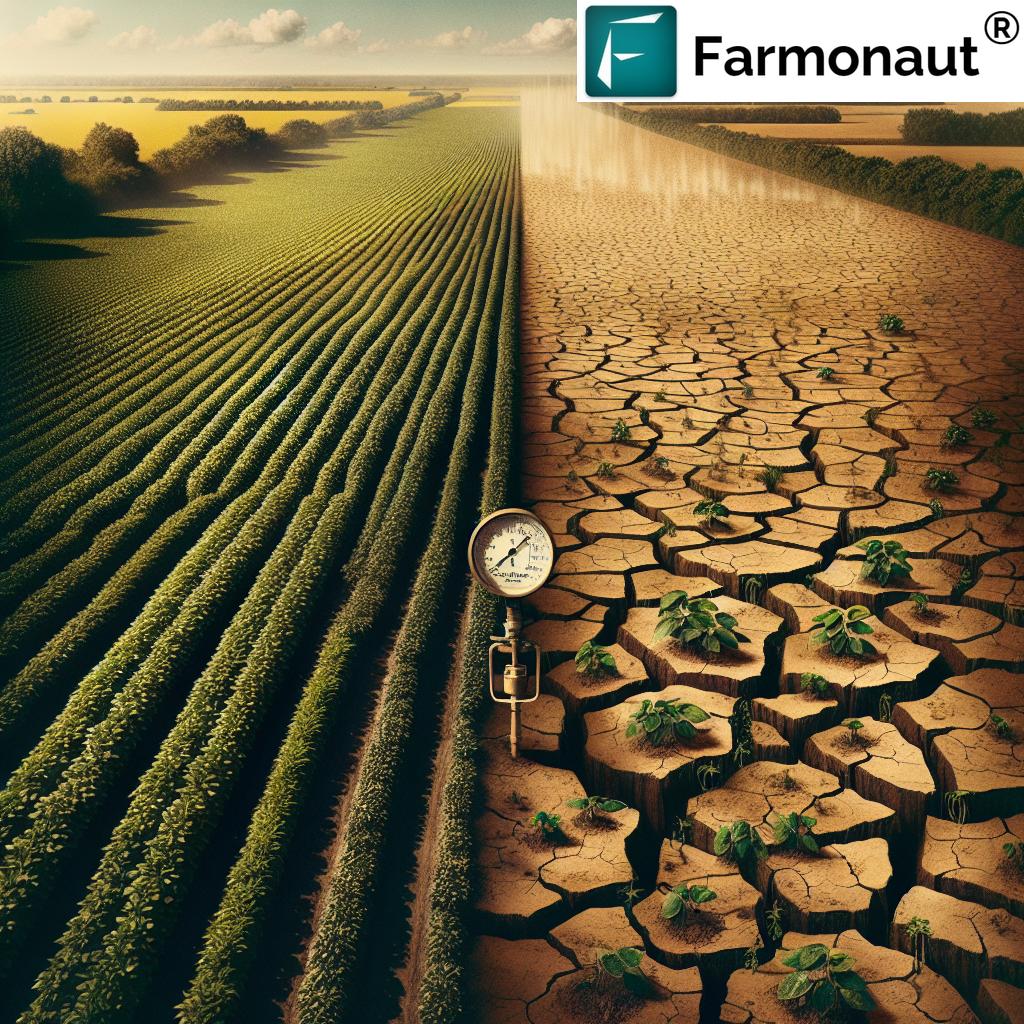
“No-till farming can reduce soil erosion by up to 90% compared to conventional tillage methods in drought-prone areas.”
No-Till Farming: A Solution for Drought-Stricken Areas
One of the most effective methods for preserving soil moisture and mitigating the effects of drought is no-till farming. This conservation agriculture practice involves planting crops without disturbing the soil through tillage.
Benefits of No-Till Farming
No-till farming offers numerous advantages, especially in drought-prone regions:
- Improved soil structure and water retention
- Reduced soil erosion
- Increased organic matter in the soil
- Lower fuel and labor costs
- Enhanced soil biodiversity
As Valerie Tate notes, “One option for planting our row crops is ‘no tilling’ and this is to help mitigate erosion and preserve soil moisture in case of a dry Spring. Tilling the soil will result in the loss of moisture that is in the soil at planting time.”
Implementing No-Till Techniques
For farmers considering no-till methods, here are some key steps to implementation:
- Invest in appropriate no-till planting equipment
- Plan crop rotations to manage residue and break pest cycles
- Use cover crops to improve soil health and moisture retention
- Monitor and adjust nutrient management strategies
- Be patient – no-till benefits often increase over time
Soil Moisture Preservation Techniques
In addition to no-till farming, there are several other techniques that Missouri and Illinois farmers can employ to preserve soil moisture:
1. Mulching
Applying organic or synthetic mulch to the soil surface can:
- Reduce evaporation
- Suppress weed growth
- Regulate soil temperature
- Improve soil structure over time
2. Cover Cropping
Planting cover crops between cash crop seasons can:
- Increase organic matter in the soil
- Improve water infiltration
- Reduce soil compaction
- Provide additional erosion control
3. Contour Farming
Planting across the slope rather than up and down can:
- Slow water runoff
- Increase water infiltration
- Reduce soil erosion
4. Efficient Irrigation Systems
Implementing modern irrigation techniques such as drip irrigation or precision sprinklers can significantly improve water use efficiency.
At Farmonaut, we offer advanced satellite-based monitoring systems that can help farmers track soil moisture levels and optimize irrigation schedules. Learn more about our services at Farmonaut’s web application.
Optimal Planting Temperatures for Key Crops
Understanding the ideal soil temperatures for planting is crucial for achieving successful crop establishment. Here’s a breakdown of optimal planting temperatures for common crops in Missouri and Illinois:
| Crop Type | Optimal Soil Temperature (°F) | Ideal Soil Moisture Content (%) | Drought Mitigation Techniques |
|---|---|---|---|
| Corn | 50-55 | 50-70 | No-till, mulching, drought-resistant varieties |
| Soybeans | 55-60 | 50-70 | No-till, cover cropping, efficient irrigation |
| Wheat | 40-50 | 50-70 | No-till, contour farming, drought-tolerant varieties |
| Cotton | 60-65 | 60-70 | Conservation tillage, precision irrigation |
Remember, these are general guidelines, and local conditions may necessitate adjustments. Always consult with local agricultural extension services for region-specific recommendations.
Spring Weather and Crop Planting Strategies
Spring weather patterns in Missouri and Illinois can be unpredictable, presenting challenges for farmers planning their planting schedules. Here are some strategies to navigate these uncertainties:
1. Stay Informed
- Regularly check local weather forecasts
- Utilize agricultural weather services for detailed predictions
- Monitor soil temperature and moisture trends
2. Be Flexible with Planting Dates
- Have a range of acceptable planting dates rather than a single target
- Be prepared to adjust plans based on weather conditions
- Consider split planting to spread risk
3. Use Technology to Your Advantage
- Employ precision planting equipment for optimal seed placement
- Utilize satellite-based monitoring systems like Farmonaut’s crop health monitoring service to track field conditions
- Implement variable-rate technology for efficient resource use
4. Prepare for Multiple Scenarios
- Have contingency plans for both wet and dry spring conditions
- Stock a variety of seed types and maturity ranges
- Ensure equipment is ready for various planting conditions
Soil Erosion Prevention in Spring Planting
Soil erosion is a significant concern during spring planting, especially in areas experiencing drought followed by heavy rains. Here are some effective strategies to prevent soil erosion:
1. Implement Conservation Tillage
- Reduce tillage intensity to maintain crop residue on the soil surface
- Use strip-till or zone-till methods to minimize soil disturbance
- Incorporate cover crops into your rotation to protect soil during fallow periods
2. Create Buffer Strips
- Plant grass or tree buffer strips along waterways and field edges
- Use contour buffer strips on sloping fields to slow water runoff
- Implement riparian buffers near streams and rivers
3. Practice Crop Rotation
- Alternate deep-rooted crops with shallow-rooted ones
- Include cover crops in your rotation to improve soil structure
- Consider perennial crops in highly erodible areas
4. Use Structural Measures
- Construct terraces on steep slopes
- Install grassed waterways to manage water flow
- Use sediment basins to capture eroded soil
By implementing these erosion prevention techniques, farmers can protect their valuable topsoil, maintain soil fertility, and contribute to long-term agricultural sustainability.
Leveraging Technology for Optimal Spring Planting
In today’s digital age, farmers have access to a wide array of technological tools that can significantly enhance their spring planting operations. At Farmonaut, we’re at the forefront of this agricultural technology revolution, offering innovative solutions to help farmers make data-driven decisions.
Satellite-Based Crop Monitoring
Our satellite-based crop monitoring system provides real-time insights into field conditions, allowing farmers to:
- Track vegetation health using NDVI (Normalized Difference Vegetation Index)
- Monitor soil moisture levels across large areas
- Identify potential problem areas before they become visible to the naked eye
- Make informed decisions about irrigation, fertilization, and pest management
To learn more about how our satellite monitoring can benefit your farm, visit our web application.
AI-Powered Advisory Systems
Our Jeevn AI advisory system analyzes multiple data points, including satellite imagery, weather forecasts, and historical crop data, to provide personalized recommendations for:
- Optimal planting dates based on soil temperature and moisture conditions
- Variety selection suited to local climate and soil types
- Customized fertilizer and pest management strategies
- Irrigation scheduling to maximize water use efficiency
Mobile Apps for On-the-Go Management
Farmonaut’s mobile apps for Android and iOS allow farmers to access critical farm data anytime, anywhere. Features include:
- Real-time crop health maps
- Weather forecasts and alerts
- Task management and record-keeping tools
- Integration with farm equipment for precision agriculture
API Integration for Custom Solutions
For farmers and agribusinesses looking to integrate Farmonaut’s data into their existing systems, we offer a robust API. This allows for seamless incorporation of our satellite and weather data into custom farm management solutions.
Explore our API Developer Docs to learn more about integrating Farmonaut’s technology into your farming operations.
Sustainable Farming Practices for Long-Term Success
As we navigate the challenges of spring planting, it’s crucial to keep long-term sustainability in mind. Implementing sustainable farming practices not only benefits the environment but also contributes to the long-term profitability and resilience of farming operations.
1. Integrated Pest Management (IPM)
- Use a combination of biological, cultural, and chemical pest control methods
- Monitor pest populations regularly to make informed decisions
- Implement crop rotation to disrupt pest life cycles
2. Precision Nutrient Management
- Conduct regular soil tests to determine nutrient needs
- Use variable-rate technology for targeted fertilizer application
- Incorporate slow-release fertilizers and organic amendments
3. Water Conservation
- Implement efficient irrigation systems like drip irrigation
- Use soil moisture sensors to optimize watering schedules
- Collect and store rainwater for use during dry periods
4. Biodiversity Enhancement
- Plant diverse crop varieties to improve resilience
- Maintain hedgerows and natural habitats for beneficial insects and wildlife
- Implement agroforestry practices where appropriate
By adopting these sustainable practices, farmers can ensure the long-term health of their land while maintaining productive and profitable operations.
Conclusion: Embracing Innovation for Successful Spring Planting
As we’ve explored throughout this guide, successful spring planting in Missouri and Illinois requires a careful balance of traditional farming wisdom and modern technological innovations. By understanding and optimizing soil temperature, moisture content, and implementing sustainable practices like no-till farming, farmers can set the stage for a productive growing season, even in the face of challenging weather conditions.
At Farmonaut, we’re committed to supporting farmers with cutting-edge tools and insights that make precision agriculture accessible and affordable. Our satellite-based monitoring systems, AI-powered advisory services, and user-friendly mobile apps are designed to help farmers make data-driven decisions that improve yields, reduce costs, and promote sustainable farming practices.
We encourage farmers to explore our range of services and see how they can be integrated into your spring planting strategies. Visit our web application to learn more about how Farmonaut can help optimize your farming operations.
Remember, successful farming is a continuous learning process. Stay informed, be adaptable, and don’t hesitate to leverage new technologies and practices that can give your crops the best start possible this spring.
Frequently Asked Questions (FAQ)
- What is the ideal soil temperature for planting corn?
The ideal soil temperature for planting corn is around 50°F (10°C). - How does no-till farming help in drought conditions?
No-till farming helps preserve soil moisture, improve soil structure, and reduce erosion, making crops more resilient to drought conditions. - What are the benefits of using satellite-based crop monitoring?
Satellite-based crop monitoring provides real-time insights into crop health, soil moisture levels, and potential problem areas, allowing for more precise and timely management decisions. - How can I determine the right time to plant in spring?
Monitor soil temperature and moisture levels, stay informed about local weather forecasts, and consult with local agricultural extension services for region-specific recommendations. - What are some effective soil erosion prevention techniques?
Effective soil erosion prevention techniques include conservation tillage, cover cropping, contour farming, and creating buffer strips.
Earn With Farmonaut
Earn 20% recurring commission with Farmonaut’s affiliate program by sharing your promo code and helping farmers save 10%. Onboard 10 Elite farmers monthly to earn a minimum of $148,000 annually—start now and grow your income!
Learn more about our affiliate program
Farmonaut Subscriptions


